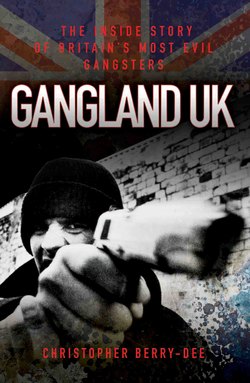Читать книгу Gangland UK - Christopher Berry-Dee - Страница 6
Introduction
Оглавление‘Gil. You’ve got to liven him up, put the fear of God into him, mate, and he knows it’s only down to you that he’s walking about and breathing fresh air.’
TERRENCE ‘TERRY’ ADAMS, TO HIS ENFORCER, GILBERT WYNTER MI5 TAPES(1997)
According to a 2006 report published by the Home Office, almost half-a-million British youngsters belong to teenage gangs. The fear is that some youngsters could graduate to the adult gangs involved in drug-dealing and serious theft found in most major cities and members of gangs were far more likely than other youths to have been expelled from school, to have friends who have been in trouble with the police and to be regularly drunk. Today, in a society where cans of lager can be cheaper than bottled water, many of Britain’s youth have a bleak future.
Current statistics show that almost half-a-million youngsters regularly break the law and intimidate their communities. Many have taken illegal drugs, carry weapons and have been involved in serious violence, as well as vandalising property and frightening passers-by. Indeed, with an already over-stretched police force, and a criminal justice system reluctant to incarcerate young offenders, aligned with an overcrowded penal system, the rule of law in our society is seriously under threat.
More than a third of youths have committed at least one serious offence – including assault, burglary, mugging, stealing a car or selling hard drugs. Nearly two-thirds have committed a serious offence of some sort; more than a quarter have committed a criminal offence; and more than a quarter have committed a series of crimes. One in eight carries a knife, underlining fears over increasing numbers of stabbings on Britain’s streets but, unlike the USA, only one in a hundred have carried a gun. Illegal drugs have been taken by 45 per cent, while 11 per cent have used a Class A substance such as heroin, crack or cocaine. Four in ten gang members said they had threatened or frightened victims, 29 per cent had used force or violence, 36 per cent had written graffiti and 31 per cent had vandalised property. These are the serious gangsters of tomorrow.
The average gang was found to have about 15 members, making them a formidable and intimidating force on any street. Similar numbers of girls and boys are involved in gangs, with 14 or 15 being the prime ages for membership. About half were mainly male, 40 per cent comprised both sexes, and 10 per cent were all or mainly female. 60 per cent were all white, 31 per cent were racially mixed, 5 per cent were Asian-only and 3 per cent black only. A third said their group had a name. Almost 40 per cent had a leader, and 15 per cent had rules for members. Almost 90 per cent had a specific place – such as a park, street corner or square – where they hung out.
The Home Office has determined gang membership to be more common among youths from less affluent families and, to a lesser degree, among those not living with both parents. It was also discovered that youngsters were often prompted to join gangs after they had become victims of crime themselves. But this is nothing new. As we shall learn from the older criminals and gangsters featured throughout this book, their formative years and social imprinting was exactly the same as the modern-day hooligan, so no surprises there.
One 21-year-old thug has said that ‘being in a gang means something. You matter if you got a gang… you’re important. You look after each other.’ Gang life came to an end for this youth six years ago when he was placed in a young offenders’ institution for murder.
It would be fair for the reader to ask at this point a question along the lines of: ‘So, what has all this got do with a book called Gangland UK?’ Well, it has everything to do with such a book because the facts contained in these pages should send out a clear message to every parent whose children are gravitating towards gang-related crime. Every single gangster or robber featured within these pages has come undone. Many have been murdered. Most have been imprisoned for long periods of time, and a good few are locked away for the rest of their lives. So, the gangsters are not role models in any shape or form for the youths of today.
Many look back at the Krays with some form of reverence, but this book exposes them for what they truly were and, compared with other criminals featured here, they were not that ‘big-time’ after all – unless one imagines that walking into a pub and blasting a man’s head off in cold blood to be something of a social achievement.
Today, we live in a society where a delinquent regards an ASBO as a badge of honour, and something to be proud of. In most inner-city areas, a significant number amount of council housing and state benefits are handed out willy-nilly to bone-idle parents who are too lazy to pry themselves away from their plasma TVs; their kids run the streets, out ’til all hours, keeping boredom at bay through petty crime and generally making a nuisance of themselves until, eventually, they fall foul of the law. Do the parents care? Some do, but in many cases, not at all. And the same can be said of all the parents of the criminals featured in Gangland UK.
I would suggest that every mature, old-fashioned crook who is mentioned in this book might give the kids of today a little hard advice: ‘Sonny, you little shit, crime just don’t pay…’ but let’s hear it straight from the horse’s mouth – from the villains and gangsters themselves.
